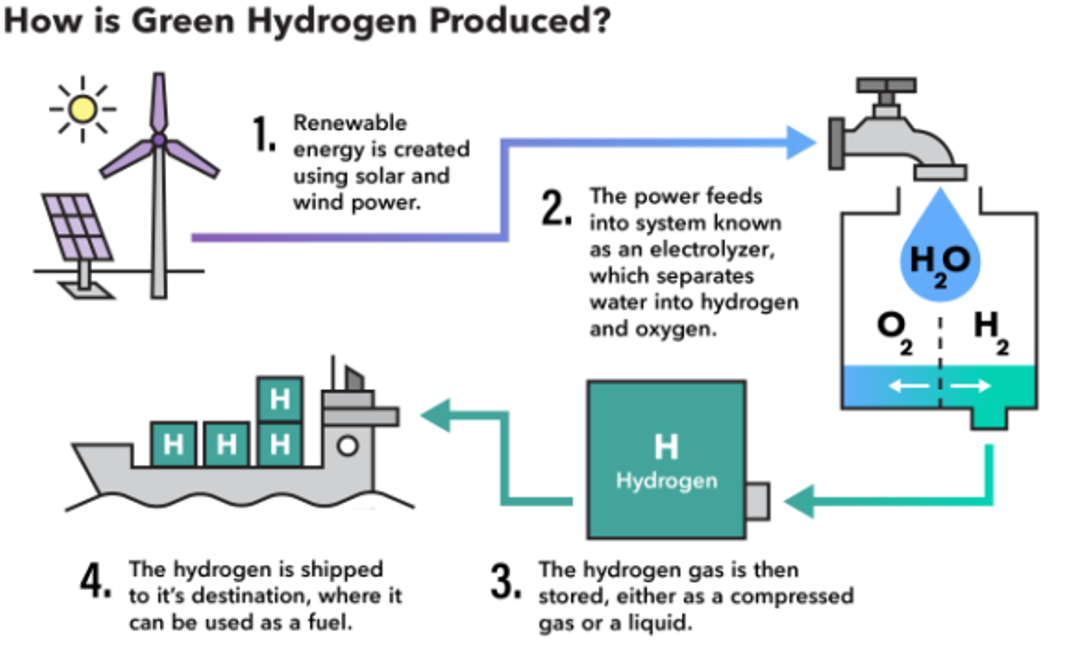PM Modi Urges Global Cooperation on Green Hydrogen
Why in the news?
Prime Minister Narendra Modi, at the Green Hydrogen Conference 2024, called for global partnerships to scale production, reduce costs, and accelerate research in green hydrogen to combat climate change.
About the launch of India’s Green Hydrogen Mission:
- Launched in 2023, the mission aims to drive innovation, infrastructure development, and industrial growth in the green hydrogen sector.
- Union Minister Pralhad Joshi announced the mission could attract Rs 8 trillion in investment and create 600,000 jobs by
- The initiative aims to reduce India’s carbon emissions by 5 MMT by 2030.
India’s Path to Net-Zero:
- Union Minister Hardeep Singh Puri emphasised India’s commitment to achieving net-zero emissions by 2070, focusing on green hydrogen.
- India aims to produce 5 million metric tonnes of green hydrogen by 2030, requiring a $100 billion investment and 125 GW of new renewable energy capacity.
About the National Green Hydrogen Mission (NGHM):
- Launched in January 2023 by the Ministry of New & Renewable Energy (MNRE).
- Aims to produce 5 million tonnes of green hydrogen annually by 2030.
- The SIGHT program provides incentives for electrolysers and green ammonia.
- Focus on decarbonizing energy, transport, and steel sectors.
- ₹19,744 crore total outlay for pilot projects, R&D, and mission components.
Difference between Green Hydrogen and Grey Hydrogen:
Green Hydrogen:
- Produced using renewable energy sources (like wind or solar) through electrolysis, which splits water into hydrogen and oxygen.
- This process generates zero carbon emissions, making green hydrogen environmentally friendly and sustainable.
Grey Hydrogen:
- Produced from natural gas through steam methane reforming (SMR), which emits significant amounts of carbon dioxide as a byproduct.
- This conventional method relies on fossil fuels, contributing to greenhouse gas emissions and climate change.
Green hydrogen is eco-friendly and sustainable, whereas grey hydrogen is carbon-intensive and reliant on fossil fuels.
Sources Referred:
PIB, The Hindu, Indian Express, Hindustan Times




